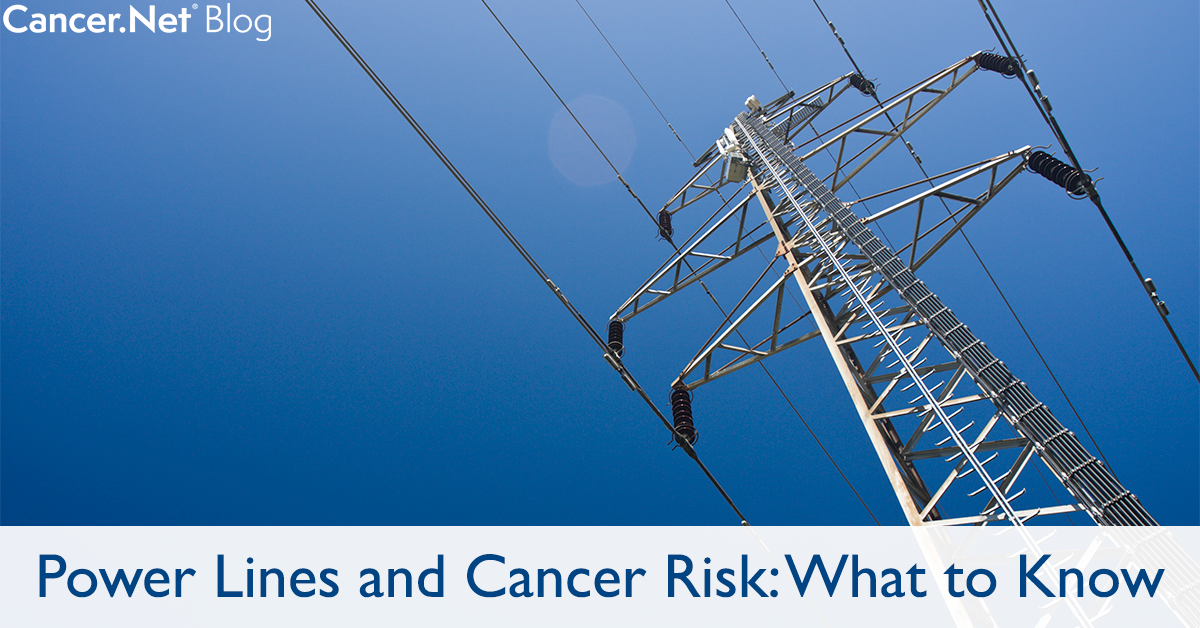
Electromagnetic fields, which are electric and magnetic fields together, are all around us. Inside our homes, appliances like computers, radios, and microwaves emit electromagnetic fields. Outside, power lines and mobile phone base stations also emit electromagnetic fields.
The effect of electromagnetic fields on human health has been an area of extensive research because people want to make sure that exposure does not cause cancer or other diseases. Here, we discuss what the research currently says about whether power lines impact cancer risk.
How are electromagnetic fields created by power lines?
Imagine electromagnetic fields as a spectrum with low-frequency radiation on the low end, which is where power lines are, and high-frequency radiation on the high end, which is where types of radiation like x-rays fall. Low-frequency radiation is less harmful than high-frequency radiation, which can damage DNA and cells.
Power lines are one of many sources of electromagnetic fields in our environment. Power lines carry energy created by power plants to your home or business. The constant flow of electricity through these transmission lines creates low-frequency, non-ionizing radiation.
Electromagnetic fields like those from power lines decrease dramatically as you move or live farther away from them. At a distance of 300 feet, and with average electricity demand, magnetic fields from power transmission lines are similar to magnetic fields found in your home, according to a 2002 report by the National Institute of Environmental Health Sciences and the National Institutes of Health.
What does the research say about whether power lines can impact cancer risk?
Concerns about power lines and cancer heightened after a 1979 study found a relationship between power lines and childhood cancer. However, other studies in the 2000s did not find an association or found an association only in homes with very high levels of magnetic forces, which is rare, according to the National Cancer Institute.
In 2005, researchers at the University of Oxford found an association between the distance from power lines and childhood cancer in Britain. Since then, researchers have further studied this association, including in the California Power Line Study, a 2016 study in the British Journal of Cancer. Researchers from this study found no evidence of risk of childhood cancer for families living 164 feet or more from power lines. And, at most, researchers found weak support for increased risk of childhood cancer for those living closer than 164 feet.
Are there other health risks associated with electromagnetic fields?
Exposure to low-level electromagnetic fields has been studied extensively, and there is no evidence that it is harmful to human health, according to the World Health Organization. In fact, according to the WHO website, most scientists and doctors agree that if there are any health effects from low-level electromagnetic fields, they are likely to be very small compared to other health risks that people face in daily life.
Other agencies, like the European Commission Scientific Committee on Emerging and Newly Identifiable Health Risks, take a more cautious stance. They say that it’s possible, but far from conclusive, that extremely low-frequency magnetic fields could be carcinogenic, or have the potential to cause cancer, in a 2015 report.
What if I’m still worried about my exposure to electromagnetic fields?
Call your local power company to schedule a reading at your home if you’re concerned about exposure to electromagnetic fields. You can also purchase a gaussmeter to measure electromagnetic fields on your own, but these devices can be expensive. Talk with your doctor if you have concerns about your exposure to electromagnetic fields.







